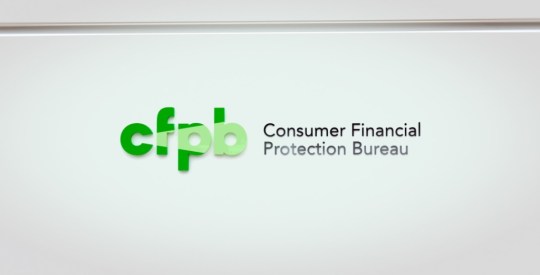Data is a relevant and valuable tool for assessing where a business or an industry is at any given time. But looking deeper than the core numbers is essential, especially when considering the shifting realities and governing rules for an industry as intertwined between public and private interests as the reverse mortgage industry is.
This was the tenor for part of a conversation between HousingWire’s Reverse Mortgage Daily (RMD) and John Lunde, president of Reverse Market Insight. RMI publishes Home Equity Conversion Mortgage (HECM) endorsement data on a monthly basis, as well as information about Federal Housing Administration (FHA) case numbers, to provide metrics for the industry’s sales performance.
But for those who look at the core numbers without assessing the broader realities of the industry, a vital element of the full picture can be lost, Lunde said.
June 2023 vs. June 2024
When comparing RMI data on industry performance between June 2023 and June 2024, it’s easy to discern a decline in industry activity. One year ago, American Advisors Group (AAG) was the top lender with 8,085 HECM loans in the 12 months ending June 30, 2023. One year later, Finance of America (FOA) — which acquired AAG — held that position but with roughly 500 fewer endorsements recorded in the prior 12 months.

The leading geographic region in the industry, the Pacific/Hawaii region, posted 700 closed loans in June 2023, a figure that dropped to 594 loans one year later. Additionally, June 2023 had an increase of 18 in the number of active lenders. One year later, there was no increase in active lenders. Competition and endorsements grew in 2023, while both metrics fell in 2024.
These numbers represent “the truth of where we’re at,” Lunde said, but assessing context for these movements is both necessary and interesting, he explained.
“I think there’s always interesting context around how the numbers get there,” he said. “Regarding some of those data points you brought up, such as the AAG-FOA combination, it would have been a no-brainer at the time of the acquisition to say that they’re combining the largest wholesale lender with a strong retail presence with, for the last many years, the strongest retail lender by volume. Putting those two together would seem to create an industry colossus, but that really hasn’t played out.”
Positive performers are present
The industry likely would have hoped for more from such a combination, Lunde said, but on the other hand, there are also success stories to be found. Mutual of Omaha Mortgage, for instance, has emerged as the No. 2 lender in the reverse mortgage space. Between June 2023 and 2024, it grew its overall number of HECM endorsements.
“They entered the industry quite a few years ago, with some obvious advantages like a great brand name, long history, and a large customer base outside of reverse,” Lunde said. “We’re seeing what those advantages can do even in a challenging interest rate environment.”
Assessing the companies that have managed to perform well in the current environment boils down to some common elements, Lunde said. A company entering or acquiring an existing reverse mortgage team can leverage its advantages outside of the industry and apply them to their reverse operations, for instance.
“We’ve seen similar things in other places, like Guild Mortgage acquiring Cherry Creek Mortgage, Lunde said, “or Harlan Accola and his team did a lot of good work at several companies, and now he’s over at Movement Mortgage, where we’re starting to see some activity and growth.”
This has been an “important part” of the industry’s dynamics over the past year and has served as an avenue to growth. “Frankly, I think that’s one of the main future sources of growth for the industry,” Lunde said.
Every player has a story
There are also players in the space that emerged with a focus on reverse and have also managed to maintain positive momentum, he added.
“You see others like Longbridge Financial, which started many years ago and took a reverse-centric approach,” Lunde said. “They brought together a good team of veterans in the industry with great experience. Even without leveraging a huge team of forward loan officers, or an existing brand name or client base outside of reverse, they’ve been able to do impressive things.”
Lunde and RMI recognize that there are wildly different stories that have unfolded across the industry. This is particularly true when it comes to the way they have approached various challenges since the late 2000s’ financial crisis — including the COVID-19 pandemic — and other realities such as the HECM program changes handed down by FHA.
“There are multiple paths for growth for the industry, and each name on our lenders’ report has a specific story,” Lunde said. “From my perspective, they fit into certain categories or segments of the approach they’re taking. From an outside perspective, I admire what some of these companies have done.”







That was an interesting perspective by an industry vendor whose principal revenues come from lenders, not FHA or even NRMLA. Notice that the primary focus of the interviewee is on his clients, not the industry as a whole. Yet is not to be expected?
So let us look at the industry as a whole. Based on what are believed to be conservative projections, this fiscal year is expected to go down as the worst year for HECM endorsements for the industry as a whole since fiscal year 2003. No matter what the causes, since October 2, 2017, we have seen the following:
1) several major mortgagees left the industry besides AAG; they include RMF, Open Mortgage, and even one of the oldest lenders, JB Nutter,
2) for the industry as a whole, three (including this fiscal year) fiscal years of the last six fiscal years will end up being the first (2024), second (2019), and third (2023) worst fiscal years for HECM endorsements since fiscal 2003,
3) one of the largest companies shown above is in what appears to be survival mode despite taking (or soon to be taking announced) very strong measures to turn the situation around (based on its SEC Forms 10-K and other similar SEC filings and information included in stories produced by RMD),
4) one of the last six fiscal years also saw the best year for HECM endorsements (2022) since fiscal year 2011 which was a year of lower interest rates BUT a recent email from HUD officials noted that as of September 30, 2023, fiscal year 2022 had by far the worst negative net present value of future cash flows of any other cohort of endorsed HECMs by fiscal year of endorsement at over $800 million (no doubt, due to an insurance principle known as adverse selection), and
5) over the last few years, a significant percentage of months shown in the monthly Top 100 list of HECM lenders report produced by the company led by the interviewee, had fewer than 100 lenders.
There is, no doubt, much more can be presented about the problems and highlights for individual lenders, but it is the condition of the industry as a whole that needs focus. I ran the tax department of Kaiser Steel Corporation, the ninth largest steel maker in the nation in 1982. While it was flush with cash and profits from 1981, the industry as a whole told a much different story. Today, the steel making in this country is very low and Kaiser Steel, a former Fortune 250 company, disappeared a few decades ago. Is that what will happen to this minor but important industry for thousands of senior homeowners? Doubtful, but it is….